Lost And Forgotten Goddess Asherah – Queen Consort Of The Sumerian God Anu And Ugaritic God El
Ellen Lloyd - MessageToEagle.com - Known as Lady of the Sea and mother goddess, Asherah is one of the oldest deities in the Sumerian and Ugaritic pantheon.
Goddess Asherah was worshipped by many ancient civilizations in the Near East.
Was goddess Asherah also the lost bride of Yahweh?
Some biblical scholars believe that Asherah was at one time worshipped as the consort of Yahweh.
Who was the lost goddess of the Hebrews?
Asherah – Chief Goddess Of The Canaanite Pantheon
In Ugaritic mythology, this lost and forgotten deity is referred to as The Lady Asherah of The Sea. Several unearthed ancient clay tablets and writings from Ugarit, which was once an ancient port city in what is today called Ras Shamra, in northern Syria describe goddess Asherah as the wife of chief god El, the West Semitic counterpart of god Anu.
God El was the ruler of heaven and goddess Asherah had the sea as her domain. It is said that she had as many as 70 children and among them were important gods such as Baal, Anath, and Mot. There are also ancient references to one of her servants who was a fisherman named Qadesh was-Amrur. He used to bring her fish and help her saddle her donkey.
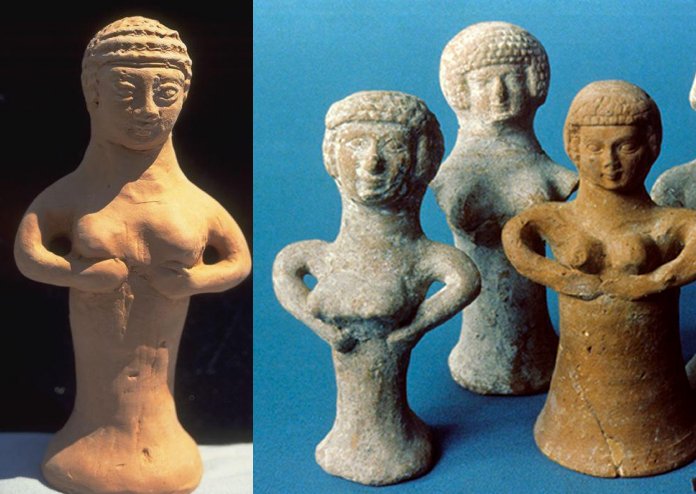
Clay statues of goddess Asherah. Image credit Queen of Heaven - Goddess Asherah
Although goddess Asherah was worshipped in many ancient cities, there is little information about her before the period of Ugaritic myths. Her history is complex and shrouded in mystery.
To the Hittites, this goddess appears as Asherdu(s) or Asertu(s), the consort of Elkunirsa ("El the Creator of Earth") and mother of either 77 or 88 sons.
See also:
Was A Statue Of Asherah Hidden In The Ark Of The Covenant?
Shamash: Mesopotamian God Of Sun, Truth, Justice And Healing
Nanna: Mesopotamian Moon God, Lord Of Wisdom And Father Of The Gods
Mysterious Scorpion Goddess In Myths And Legends
In one Sumerian inscription set up in honor of Hammurabi, King of Babylon, about 1763 B.C., she is mentioned as Ashratum, the bride of Anu. Since the Sumerian and Akkadian god Anu most likely corresponds to the Canaanite god El, historians think that goddess Asherah held the position of the chief or mother goddess for at least three centuries prior to the Ugaritic period.
In the Amarna letters, also known as Amarna Tablets as well as in the Bible the names of Asherah and Astarte interchange which creates confusion among scholars.
Among the Amarna letters, a King of the Amorites is named Abdi-Ashirta, "Servant of Asherah". Ashtart is believed to be linked to the Mesopotamian goddess Ishtar who is sometimes portrayed as the daughter of Anu while in Ugaritic myth, Ashtart is one of the daughters of El, the West Semitic counterpart of Anu.
Goddess Asherah And The Biblical Connection
Raphael Patai writes in his book The Hebrew Goddess that it is almost inevitable that the cult of the great Canaanite mother-goddess should penetrate the Hebrew religion as well. “While it is not easy to reach a definite conclusion as to the physical shape in which Asherah was represented among the Hebrews, a careful perusal of Biblical references to the “Asherahs” seems to indicate that they carved wooden images which were set up by implanting their base into the ground. In early times they often stood next to altars dedicated to Baal, later a “statue of Asherah” was set up in the Jerusalem Temple itself. The word Asherah in Biblical usage can refer to either to the goddess herself or to her image.”
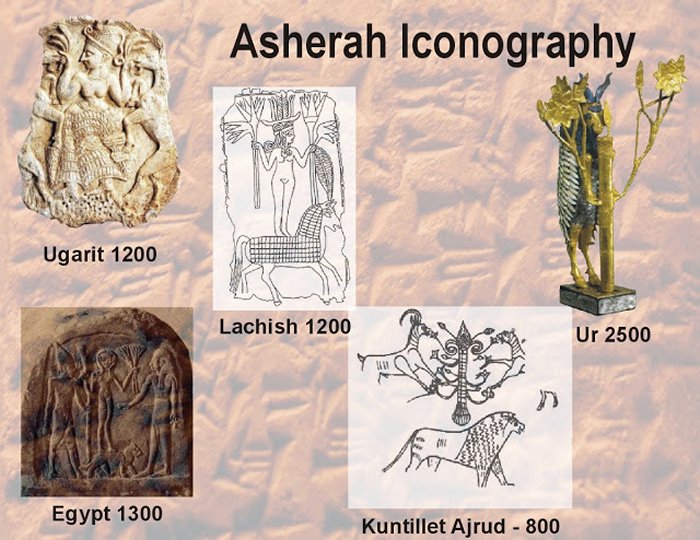
Image credit: Andrew Stehlik
In his book, Did God Have A Wife?, author William G. Dever demonstrates that a cult of Asherah did flourish in ancient Israel. According to Dever, “some of the biblical references to "asherah" are downplayed in the texts, reducing her as it were to only a "shadow of herself" — merely a symbol of the goddess, a pole or tree.”
What Was The Asherah Pole?
The word Asherah is translated in Greek as also, grove, or occasionally by dendra, trees. Asherah poles, which were sacred trees or poles, are mentioned many times in the Hebrew Bible. Asherah poles were also known in Scripture as the "high places." This is likely due to the connection of worship upon hilltops and mountains.
The first mention of the Asherah pole is in Exodus 34:13 (NIV): "Break down their altars, smash their sacred stones and cut down their Asherah poles."
The Israelites were commanded to destroy any Asherah pole they found among the other people in the land.
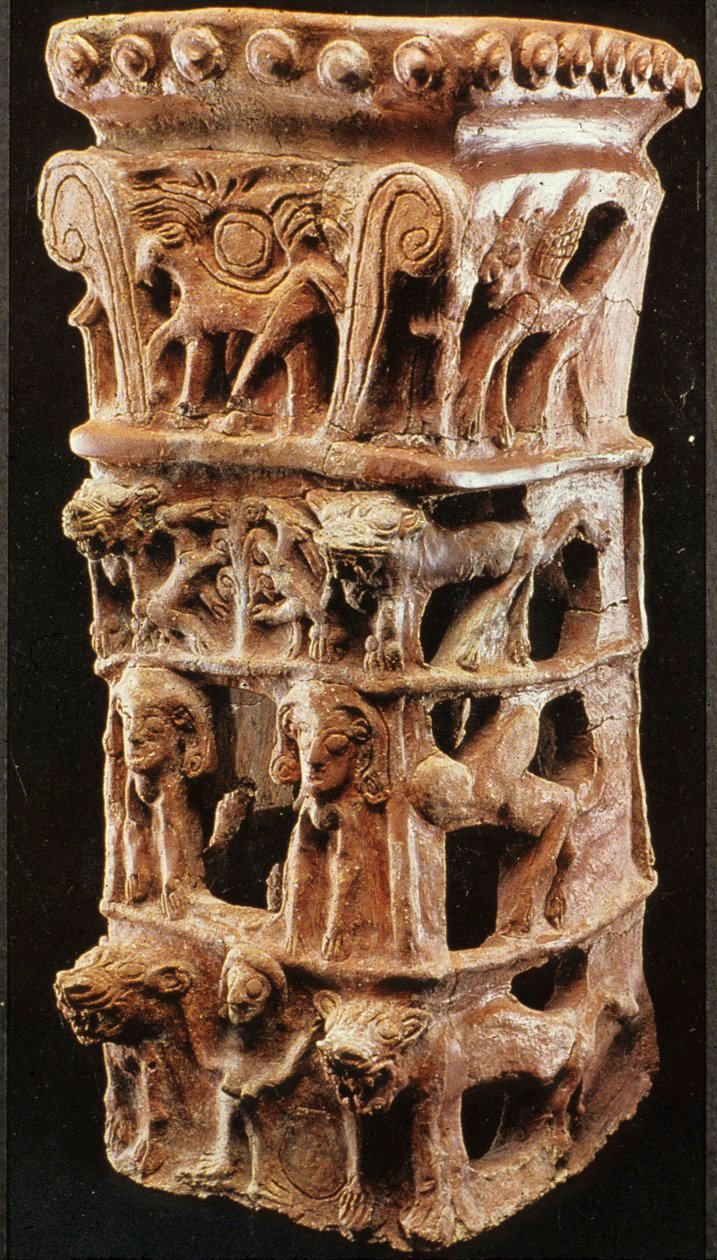
This four-tiered cult stand found at Tanaach is thought to represent Yahweh and Asherah, with each deity being depicted on alternating tiers. Photo: © The Israel Museum, Jerusalem/Israel Antiquities Authority (photograph by Avraham Hay).
In Deuteronomy 16:21, the Lord commanded the people of Israel to not make Asherah poles of their own. However, it did not take long for the Israelites to disobey this command. In Judges 3:7, we read, "And the people of Israel did what was evil in the sight of the LORD. They forgot the LORD their God and served the Baals and the Asheroth." Instead of obeying God's commands, they worshiped the gods of the people God sent them to drive out.
It is believed that many Asherah poles were raised in honor of the mother-goddess Asherah. The purpose of the objects remains a subject of heated debate among scholars.
The whole subject becomes even more complicated due to the discovery of ancient inscriptions unearthed at Kuntillet ‘Ajrud. The inscriptions are religious in nature, invoking Yahweh, El, and Baal. What created an intense debate are the inscriptions that include the phrases "Yahweh of Samaria and his Asherah" and "Yahweh of Teman and his Asherah.
Who or what was Asherah? The answer to this question depends on scholars’ interpretation of Asherah in relation to Yahweh.
Written by Ellen Lloyd – AncientPages.com
Copyright © AncientPages.com All rights reserved. This material may not be published, broadcast, rewritten or redistributed in whole or part without the express written permission of AncientPages.com
Expand for referencesMore From Ancient Pages
-
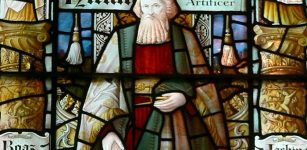 Legendary Hiram Abiff – Master And Chief Architect Loved By Few And Hated By Many Including King Solomon
Featured Stories | Jan 27, 2019
Legendary Hiram Abiff – Master And Chief Architect Loved By Few And Hated By Many Including King Solomon
Featured Stories | Jan 27, 2019 -
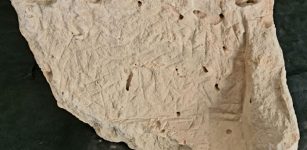 3,500-Year-Old Stone Inscribed With A Curse Against The City’s Governor Discovered In Jerusalem
Archaeology | Jul 13, 2022
3,500-Year-Old Stone Inscribed With A Curse Against The City’s Governor Discovered In Jerusalem
Archaeology | Jul 13, 2022 -
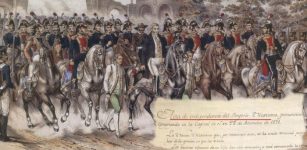 On This Day In History: Declaration Of Independence Of The Mexican Empire Is Drafted – On Sep 28, 1821
News | Sep 28, 2016
On This Day In History: Declaration Of Independence Of The Mexican Empire Is Drafted – On Sep 28, 1821
News | Sep 28, 2016 -
 Bighorn Medicine Wheel: Sacred Site And Ancient Solar Observatory
Civilizations | May 29, 2016
Bighorn Medicine Wheel: Sacred Site And Ancient Solar Observatory
Civilizations | May 29, 2016 -
 Rare Unexpected Discovery Of Elizabethan-Era Ship At Quarry 300 Meters From The Coast
Archaeology | Jan 2, 2023
Rare Unexpected Discovery Of Elizabethan-Era Ship At Quarry 300 Meters From The Coast
Archaeology | Jan 2, 2023 -
 Will-o’-the-wisp: Eerie Lights Over Swamps And Marshes That Frightened And Led People Astray
Featured Stories | Apr 23, 2020
Will-o’-the-wisp: Eerie Lights Over Swamps And Marshes That Frightened And Led People Astray
Featured Stories | Apr 23, 2020 -
 Mysterious Cave With Giant Skulls Decorated By The Neanderthals Discovered In Spain
Archaeology | Jan 27, 2023
Mysterious Cave With Giant Skulls Decorated By The Neanderthals Discovered In Spain
Archaeology | Jan 27, 2023 -
 Rare 2,700-Year-Old Seal Of Biblical King Jeroboam II’s Servant Confirmed Authentic
Artifacts | Jan 18, 2021
Rare 2,700-Year-Old Seal Of Biblical King Jeroboam II’s Servant Confirmed Authentic
Artifacts | Jan 18, 2021 -
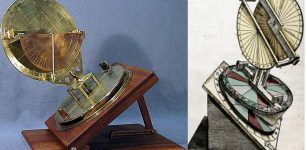 Torquetum: Sophisticated Medieval Astronomical Instrument
Ancient History Facts | Jul 12, 2018
Torquetum: Sophisticated Medieval Astronomical Instrument
Ancient History Facts | Jul 12, 2018 -
 Prehistoric Humans Cooked 780,000 Years Ago – Oldest Evidence Of Controlled Fire Discovered
Archaeology | Nov 15, 2022
Prehistoric Humans Cooked 780,000 Years Ago – Oldest Evidence Of Controlled Fire Discovered
Archaeology | Nov 15, 2022 -
 48,000-Year-Old Tooth That Belonged To Neanderthal Child Found In Northern Italy
Fossils | Sep 19, 2020
48,000-Year-Old Tooth That Belonged To Neanderthal Child Found In Northern Italy
Fossils | Sep 19, 2020 -
 Bouboulina: Heroine, Wealthy Widow And Shipowner Who Commanded A Greek Fleet Against The Ottoman Empire
Featured Stories | Aug 30, 2019
Bouboulina: Heroine, Wealthy Widow And Shipowner Who Commanded A Greek Fleet Against The Ottoman Empire
Featured Stories | Aug 30, 2019 -
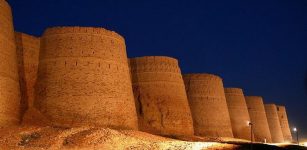 Enormous And Impressive Derawar Fort, Bahawalpur, Pakistan Will Be Restored
News | Sep 14, 2015
Enormous And Impressive Derawar Fort, Bahawalpur, Pakistan Will Be Restored
News | Sep 14, 2015 -
 Siege Of Alesia: Last Decisive Battle That Ended Gallic Independence In France And Belgium
Featured Stories | Feb 1, 2017
Siege Of Alesia: Last Decisive Battle That Ended Gallic Independence In France And Belgium
Featured Stories | Feb 1, 2017 -
 Climate Played A Crucial Role In Human Migration From Africa – New Study
Archaeology | Dec 8, 2023
Climate Played A Crucial Role In Human Migration From Africa – New Study
Archaeology | Dec 8, 2023 -
 Brahan Seer – A Legendary Scottish Nostradamus
Featured Stories | Feb 28, 2016
Brahan Seer – A Legendary Scottish Nostradamus
Featured Stories | Feb 28, 2016 -
 Mystery Of The Kusanagi Treasure: The Legendary Sword
Artifacts | Feb 8, 2016
Mystery Of The Kusanagi Treasure: The Legendary Sword
Artifacts | Feb 8, 2016 -
 Large 3,400-Year-Old Mittani Empire-Era City Emerges From The Tigris River In Iraq
Archaeology | May 30, 2022
Large 3,400-Year-Old Mittani Empire-Era City Emerges From The Tigris River In Iraq
Archaeology | May 30, 2022 -
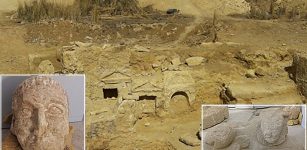 Remains Of Graeco-Roman Temple Discovered Near Egypt’s Siwa Oasis
Archaeology | Apr 6, 2018
Remains Of Graeco-Roman Temple Discovered Near Egypt’s Siwa Oasis
Archaeology | Apr 6, 2018 -
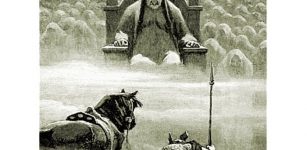 Death Of Norse God Balder And Loki’s Mischief That Led To Destruction In Ragnarok
Featured Stories | Nov 15, 2016
Death Of Norse God Balder And Loki’s Mischief That Led To Destruction In Ragnarok
Featured Stories | Nov 15, 2016

